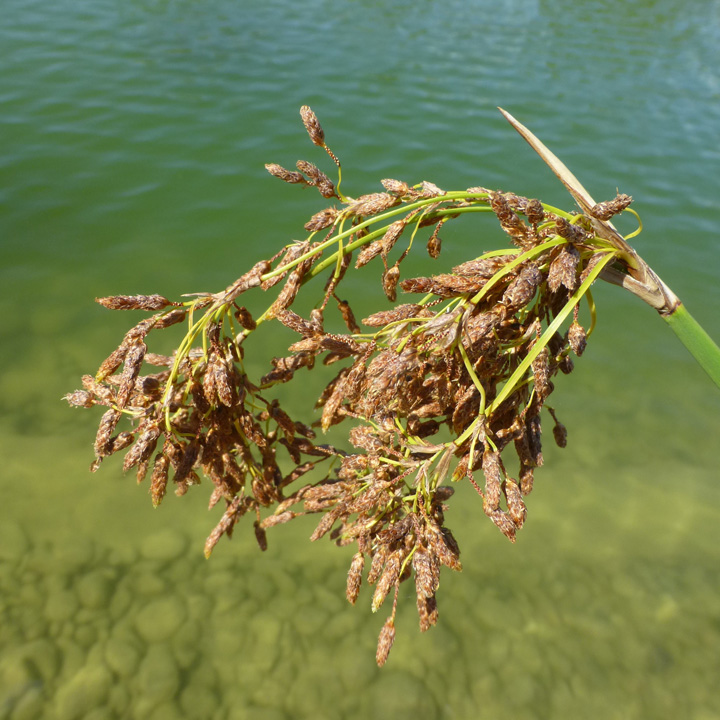Rhizomes 10-15 mm diam. Culms bluntly trigonous with nearly flat sides throughout to cylindric proximally, obscurely trigonous distally, 1-4 m × 4-10 mm, smooth. Leaves 3-4, basal, ca. 1/6 culm length; sheath fronts coarsely pinnate-fibrillose; blades 0-1, dorsiventrally flat, not more than 1/2 sheath length, distal blade to 20 × 2 mm. Inflorescences 3 or more times branched, branches to 21 cm; proximal bract usually erect, obtusely trigonous to subcylindric-channeled, 1-8 cm, margins often scabridulous. Spikelets 25-150+, solitary and in clusters of 2 or more, 5-11 × 3 mm; scales orange-brown, brightly lineolate-spotted, broadly oval, 2.5 × 2 mm, margins ciliolate, flanks veinless, apex rounded, notch 0.1-0.2 mm deep, awn not contorted, usually bent outward, 0.3 mm, sparsely scabrous. Flowers: perianth members 2-4, dark red-brown, thickly strap-shaped or trigonous, equaling achenes, fringed with brownish, soft, blunt hairs; anthers 1.5 mm; styles 2-fid. Achenes dark gray-brown when ripe, unequally biconvex or plano-convex, ovoid to obovoid, 1.8-2.2 × 1.3 mm; beak 0.2 mm. 2n = 68.
Fruiting spring-summer. Brackish to fresh marshes, shores, often emergent in water; 0-1400 m; Ala., Ariz., Ark., Calif., Fla., Ga., Kans., La., Miss., Nev., N.Mex., N.C., Okla., S.C., Tenn., Tex.; Mexico; West Indies; Central America; South America (s to Argentina, Chile); Pacific Islands (Cook Islands, Easter Island, Hawaii); introduced, New Zealand.
Schoenoplectus californicus forms sterile hybrids with S. acutus in California (see 1. S. tabernaemontani) (S. G. Smith 1995). It reportedly occurs in Pope County, Illinois, although I have not seen a specimen.




